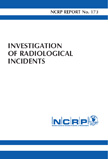|
|
April 8, 2013
The 2013 AAPM/RSNA Imaging Physics Residency Grant Recipients are:
University of Alabama at Birmingham - Michael Yester
University of Wisconsin School of Medicine and Public Health - Frank Ranallo
Memorial Sloan-Kettering Cancer Center - Lawrence Rothenberg
AAPM TG Report 124 "A Guide for Establishing a Credentialing and Privileging Program for Users of Fluoroscopic Equipment in Healthcare Organizations" is now available on the AAPM Reports list
ACR
The American College of Radiology has released the newest version of the ACR Appropriateness Criteria® (ACR AC). This latest release includes 24 updated and 4 new topics from various expert panels. There are now 186 topics with more than 900 variants. The attached Table of Contents identifies the revised and new topics.
The ACR AC are evidence-based guidelines to assist referring physicians and other health care providers in making the most appropriate imaging or treatment decision for a specified medical condition. They are developed by expert panels in diagnostic imaging, interventional radiology, and radiation oncology. More than 80 physicians from specialties outside of radiology/radiation oncology participate in the development and review of the topics.
The updated ACR AC can be accessed free of charge for individual users on the ACR web site at www.acr.org/ac.
MEDICARE
Sequestration Cuts Kick In For Medicare Claims
Starting April 1, 2013 Medicare claims officially will be hit by the budget sequestration, according to an earlier memo CMS sent to providers and suppliers. The March 8th memo stated that all Medicare claims with dates of service or discharge would be subject to the 2 percent reduction in payment due to the sequester starting April 1st.
All Medicare providers will have their reimbursements cut by 2 percent, or about $10.84 billion in total spending reductions. The reduction will last from April through Sept. 30, 2021, unless Congress intervenes.
The CMS memo advises providers that while beneficiary payments for deductibles and coinsurance are not subject to the 2 percent payment reduction, Medicare payment to beneficiaries for unassigned claims is, and CMS urges providers and suppliers who bill claims on an unassigned basis to let beneficiaries know.
A claims payment adjustment will be applied to all claims after determining coinsurance, the deductible and any secondary payer adjustments, according to CMS. Amounts paid by the beneficiary, including the deductible and coinsurance, are not subject to the sequestration cut, meaning beneficiaries must pay the full amount. But Medicare payment to beneficiaries for unassigned claims is subject to the 2 percent reduction, the agency said.
Proposed Decision Memo for Positron Emission Tomography (FDG) for Solid Tumors
On March 7, CMS issued a national coverage analysis for positron emission tomography (CAG-00065R2) removing the national non-coverage of FDA approved oncological uses of PET expanding the ability of local contractors to determine coverage for these uses.
DECISION SUMMARY
A. The Centers for Medicare & Medicaid Services (CMS) proposes to end the coverage with evidence development (CED) requirement for F18 fluorodeoxyglucose positron emission tomography (FDG PET) for oncologic indications contained in the Medicare National Coverage Determinations Manual. This will remove the current requirement for prospective data collection by the National Oncologic PET Registry (NOPR).
B. CMS proposes that, subject to the exception in C below, one F18 fluorodeoxyglucose positron emission tomography (FDG PET) is covered when used to guide subsequent physician management of anti-tumor treatment strategy after completion of initial anticancer therapy. Coverage of any additional FDG PET scans used to guide subsequent physician management of anti-tumor treatment strategy after completion of initial anticancer therapy will be determined by local Medicare Administrative Contractors.
C. CMS proposes that FDG PET for subsequent anti-tumor treatment strategy for beneficiaries with cancers of the prostate is not reasonable and necessary and therefore is nationally non-covered by Medicare.
In order to maintain an open and transparent process, CMS is seeking comments on their proposal.
For additional information go to:
http://www.cms.gov/medicare-coverage-database/details/nca-proposed-decision-memo.aspx?NCAId=263
NCRP
NCRP
REPORT
No.
173,
INVESTIGATION
OF
RADIOLOGICAL
INCIDENTS
The
National
Council
on
Radiation
Protection
and
Measurements
(NCRP)
is
chartered
to
disseminate
information
and
recommendations
that
advance
radiation
safety
in
the
public
interest.
The
Council
recently
published
Report
173
that
provides
guidance
for
the
conduct
of
investigations
into
radiological
incidents.
Abnormal
occurrences
associated
with
radiation
exposure
could
adversely
affect
the
health
and
safety
of
workers,
medical
patients,
or
the
public.
The
report
defines
radiological
incidents
with
suggested
criteria
for
determining
the
scope
of
an
investigation.
Guidance
is
provided
on
the
orderly
process
to
be
followed
including
the
initial
response,
planning
the
investigation,
determining
resources,
investigating
the
incident,
performing
an
appropriately
detailed
cause
analysis,
and
developing
corrective
actions.
Typical
cause
analysis
tools
and
methods
are
described
along
with
guidance
for
determining
corrective
actions
that,
when
implemented,
will
reduce
or
prevent
the
opportunity
for
recurrence.
This
report
compliments
Report
162,
Self-Assessment
of
Radiation
Safety
Programs,
published
in
2009,
that
guides
the
development
of
programmatic
features
to
improve
performance
of
radiation
safety
programs.
These
reports
are
of
value
to
radiation
safety
staff
members,
managers,
government
regulatory
agencies,
workers,
and
interested
members
of
the
public.
NCRP
reports may
be
ordered
on-line
at
http://www.ncrppublications.org/.
|








